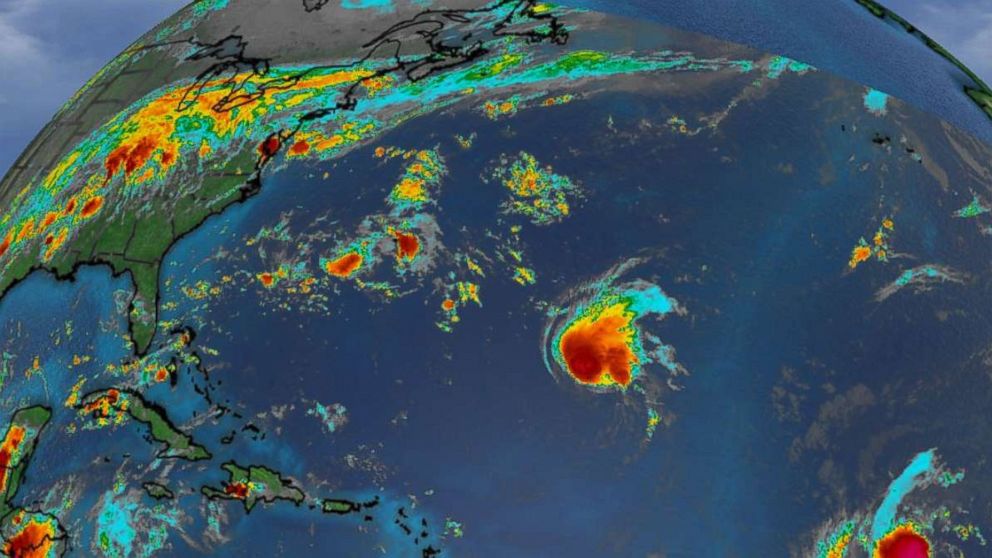Florence expected to become major hurricane, state of emergency declared in 2 more states
The peak of hurricane season in the Atlantic Ocean is Sept. 10, and right on schedule, the Atlantic Basin has come to life with numerous areas of concern. Foremost among those is Tropical Storm Florence, which is expected to restrengthen into a hurricane Sunday and looks increasingly likely to hit the East Coast.
North Carolina already declared a state of emergency ahead of the storm on Friday. Virginia and South Carolina followed suit on Saturday.
Tropical Storm Florence has sustained winds of 70 mph as of 11 p.m. Saturday evening and is located 790 miles southeast of Bermuda. The storm is moving west at 6 mph.
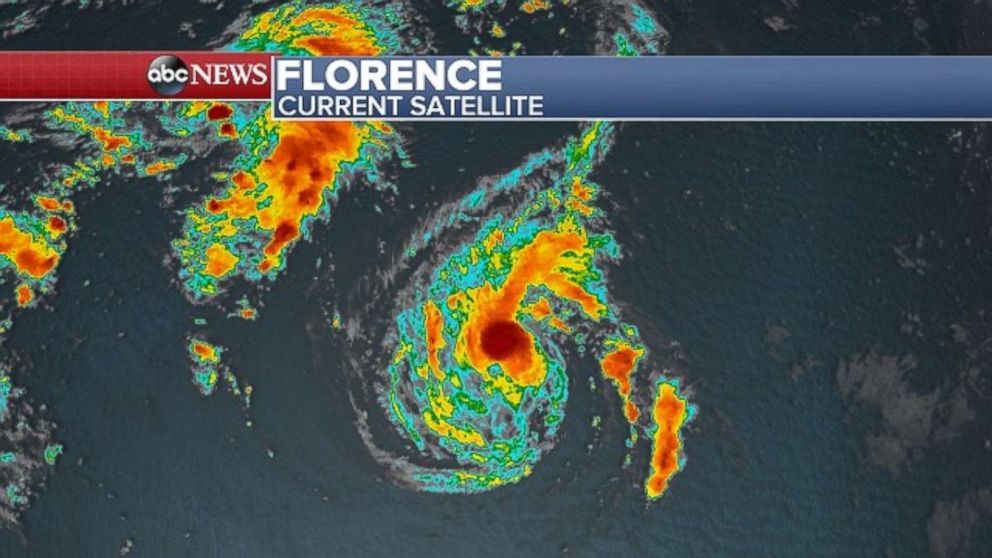
Florence is still a tropical storm, but is expected to become a hurricane by Sunday, and a major hurricane again on Monday.
The storm is forecast to move generally in a westward direction over the coming days, with an increase in forward speed during the early part of the week. On this path, Florence will track over the warm waters off the southeast U.S. coastline.
As Florence moves west, the wind shear will decrease, allowing Florence to become more organized and intensify. There is a possibility of significant intensification in the early part of next week.
A ridge of high pressure moving in from the central U.S. is expected to move toward the Northeast by midweek. This ridge of high pressure will cause a blocking pattern and steer Florence dangerously close to, or into, the East Coast of the U.S. by midweek. The forecast track shows Florence’s forecast path approaching the southeast U.S. coastline late next week.
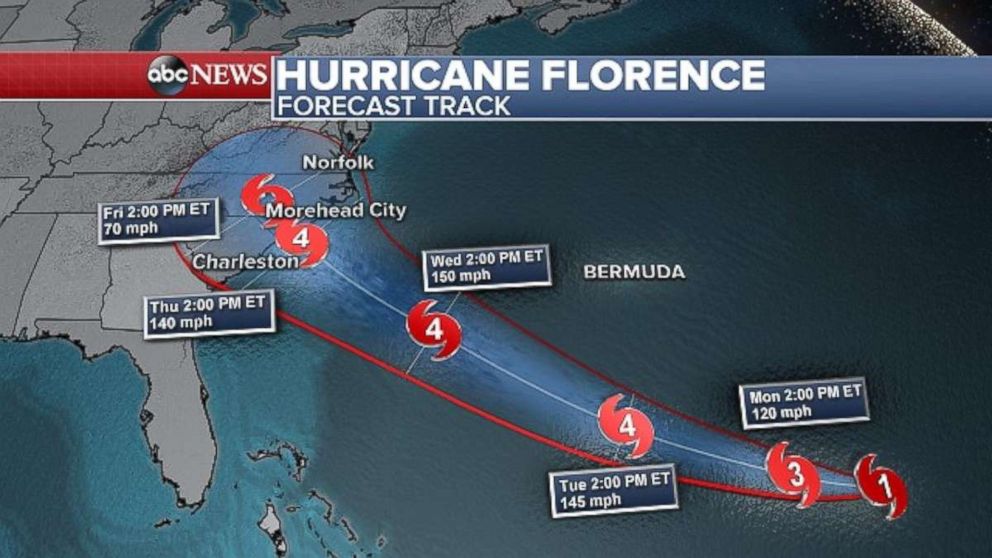
The risk of direct impact by Florence on the East Coast is rising. Most of the models are now showing Florence having a direct and major impact to the East Coast in the upcoming week. It is important to note that there is considerable uncertainty five days out, making it too soon to determine the magnitude and timing of potential major impacts to the East Coast.
The immediate threat this weekend will be large swells and dangerous rip currents along the East Coast due to the storm.
Helene forms, tropical storm targets Caribbean
Tropical Storm Helene continues to move west toward the southern Cabo Verde Islands, with sustained winds now up to 60 mph. A tropical storm warning is in effect for some of the islands as tropical storm conditions are expected there Sunday local time.
Helene will continue to gradually strengthen and be just shy of hurricane strength as it continues to pass south of the southern Cabo Verde Islands overnight through Sunday morning Eastern time.
After that, the storm will move northwest and then more northward into the eastern Atlantic and be no further threat to land.
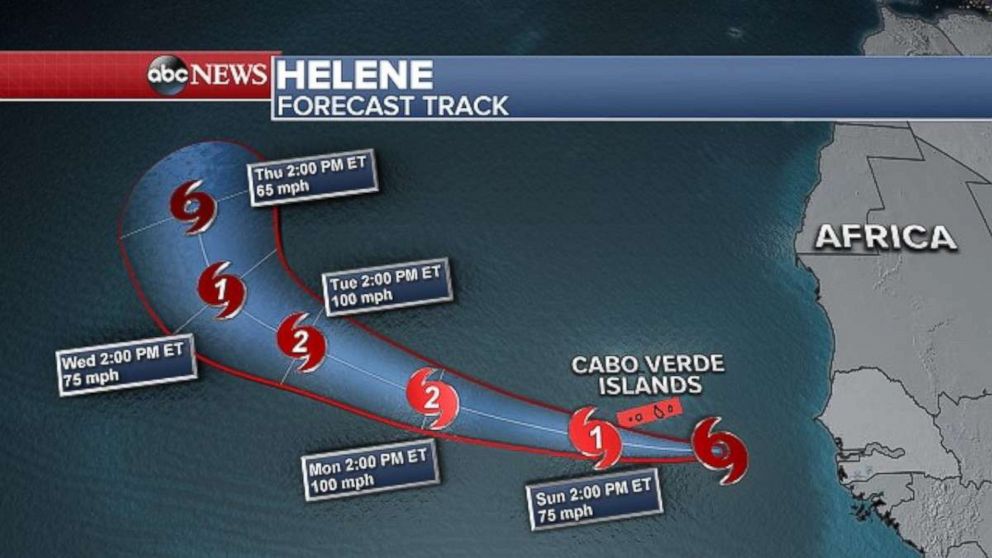
Moving closer to the Caribbean, Tropical Depression Nine has become Tropical Storm Isaac with sustained winds of 40 mph. The center of the storm is currently about 1,640 miles east of the Windward Islands. The system is moving west at 7 mph.
The system is expected to move westward over the coming days, and will likely become a tropical storm later Saturday. The forecast track has the storm strengthening to a hurricane next week as is tracks west.
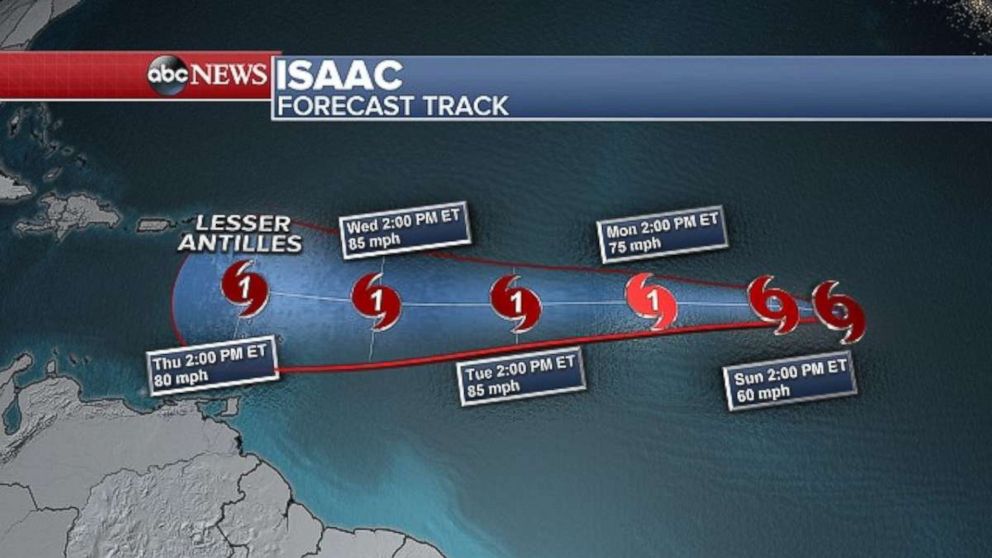
It is too early to determine what, if any, impacts this system will have on the Caribbean. However, the system is worth watching as we get into next week as it nears the Lesser Antilles around Thursday.
Olivia approaching Hawaii
The Pacific Ocean is also lively this weekend.
Hurricane Olivia had maximum sustained winds of 85 mph, and was approximately 1,025 miles east of Honolulu as of 5 p.m. Saturday local time.
On this path, Olivia could come very close or pass over the Hawaiian Islands by late Tuesday or Wednesday Eastern time as a tropical storm.
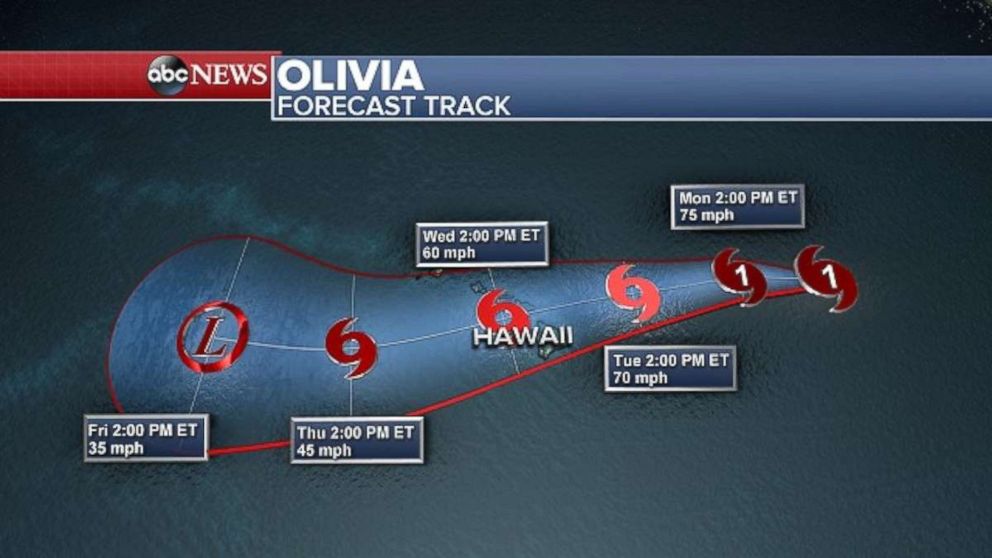
While Olivia is expected to approach the main Hawaiian Islands early next week, it is too early to determine the magnitude of the potential impacts.
It is important to note that significant impacts are possible well away from the center of the storm, and that the track error can be quite large at day 5 and beyond.
